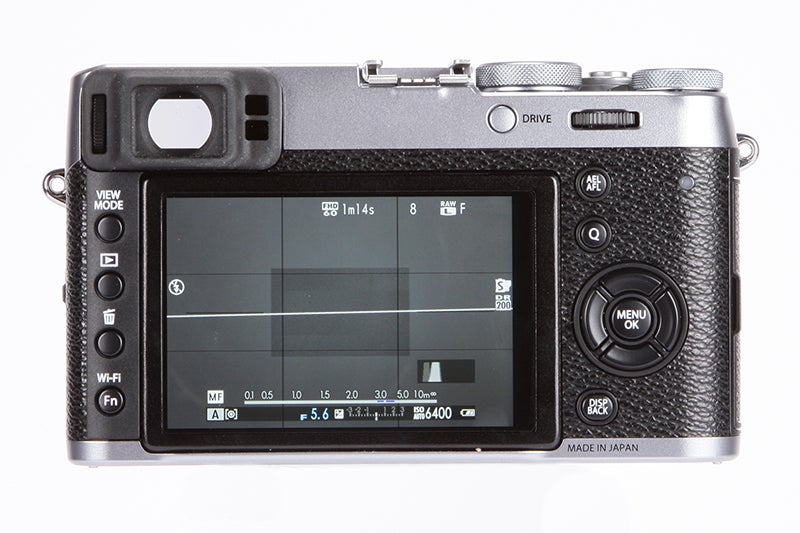We find out if the Fujifilm X100T is anything more than a cosmetic update in our Fujifilm X100T review
Fujifilm X100T Review
Fujifilm corrected a fair few of these with its updated version, the X100S, which also brought along the X-Trans CMOS sensor.
Now comes the third in the series, the X100T, which boasts a range of operating and hardware improvements as well as an intriguing new advanced hybrid viewfinder, which projects an electronic view of the main subject into the lower-right corner of its optical counterpart as a focal aid.
A strange idea maybe, but some said the same of the X100 when it first reared its head. Let’s take a closer look at the X100T.
Fujifilm X100T Review – Features
 For all that’s different and new about the X100T, there’s a lot that’s been directly ported over from its predecessors. For a start, its 16.3MP APS-C X-Trans CMOS II sensor will look familiar to anyone who has used an X100S, as will the 23mm f/2 lens.
For all that’s different and new about the X100T, there’s a lot that’s been directly ported over from its predecessors. For a start, its 16.3MP APS-C X-Trans CMOS II sensor will look familiar to anyone who has used an X100S, as will the 23mm f/2 lens.
Just as in the X100S, the X-Trans CMOS sensor uses an array of red, green and blue pixels that aren’t arranged in the Bayer filter pattern you’ll find in most digital cameras, but instead in a semi-randomised pattern. This creates a structure more akin to film, effectively minimising moiré and false colour. The sensor also contain phase detection elements to assist with autofocus.
Equipped with an X-Trans processor, the Fujifilm X100T is capable of shooting continuously at up to 6fps. It can use a sensitivity range of ISO 200-6400 in raw format, and an expanded range of ISO 100-51,200 if you’re shooting only JPEGs – a somewhat odd design choice when you consider that images shot with the expanded ISO settings are more likely to want processing.
What’s good, however, is the auto ISO setup, which allows you to customise the range of ISO settings you want the camera to use. It’s available in manual mode, and is capable of adjusting for exposure compensation. We found this to be a really streamlined mode of shooting, allowing us to maintain control without having to fuss too much with the settings.
If you want to add a little creative touch to your images, Fujifilm stocks a range of film simulation settings. The X100T gains a new mode called Classic Chrome, along with regulars Provia, Velvia and Astia. Also new to the table is Pro Neg, a more subdued mode that aims for accurately reproducing skin tones.
One interesting and useful feature of Fujifilm’s that often gets overlooked is the dynamic range setting. This allows you to expand dynamic range in highlights before they get blown out, thus recovering more detail. DR 200% adds one extra stop, while DR 400% adds two, however the catch is that using these settings restricts you to minimum ISO sensitivities. Using DR 200% means you can’t go below ISO 400, while DR 400% will restrict you to ISO 800 and above. You’ll want to use them sparingly, but DR 200% can be a lifesaver in high contrast conditions.
As you’d expect, the Fujifilm X100T is fully equipped with Wi-Fi, allowing for connection to a smart device for remote camera control and quick image sharing. No complaints here – it works perfectly well and is intuitive to set up.
Fujifilm X100T Review – Viewfinder and Screen
 Unique hybrid viewfinders have been a standout feature of the X100 series since the first iteration, and the X100T carries on that tradition with style and aplomb. A direct-vision optical viewfinder and an electronic display can be chosen between with the flick of a switch on the front of the camera.
Unique hybrid viewfinders have been a standout feature of the X100 series since the first iteration, and the X100T carries on that tradition with style and aplomb. A direct-vision optical viewfinder and an electronic display can be chosen between with the flick of a switch on the front of the camera.
The X100T’s hybrid viewfinder can not only do all the things we’re accustomed to – project exposure information and a live histogram onto the optical viewfinder for one – but now can also display an electronic view of the subject in the lower right corner of the optical viewfinder. This is designed for precise focusing, and can accordingly be magnified when using manual focus mode and combined with a peaking display or Digital Split Image display. It brings a new level of precision to focusing with the optical viewfinder.
The viewfinder information display has been refined to more closely match the excellent X-T1. The focus-distance indicator is less intrusive than before, and information display in the EVF now rotates as you rotate the camera – although, oddly, it doesn’t do this when overlaid in the optical viewfinder.
And this, of course, isn’t the end of your viewing options with the X100T. Fujifilm has bestowed the X100T with a 3-inch 1.04-million-dot LCD that represents an enormous improvement over the 460,000-dot specimen we saw on previous models.
Three excellent viewing options then, but what really works about the X100T is how the whole ends up being greater than the sum of its parts. You can switch fluidly from rangefinder-style immediacy of the optical viewfinder, to precise composition with the EVF, to shooting with the camera away from your eye on the LCD.




